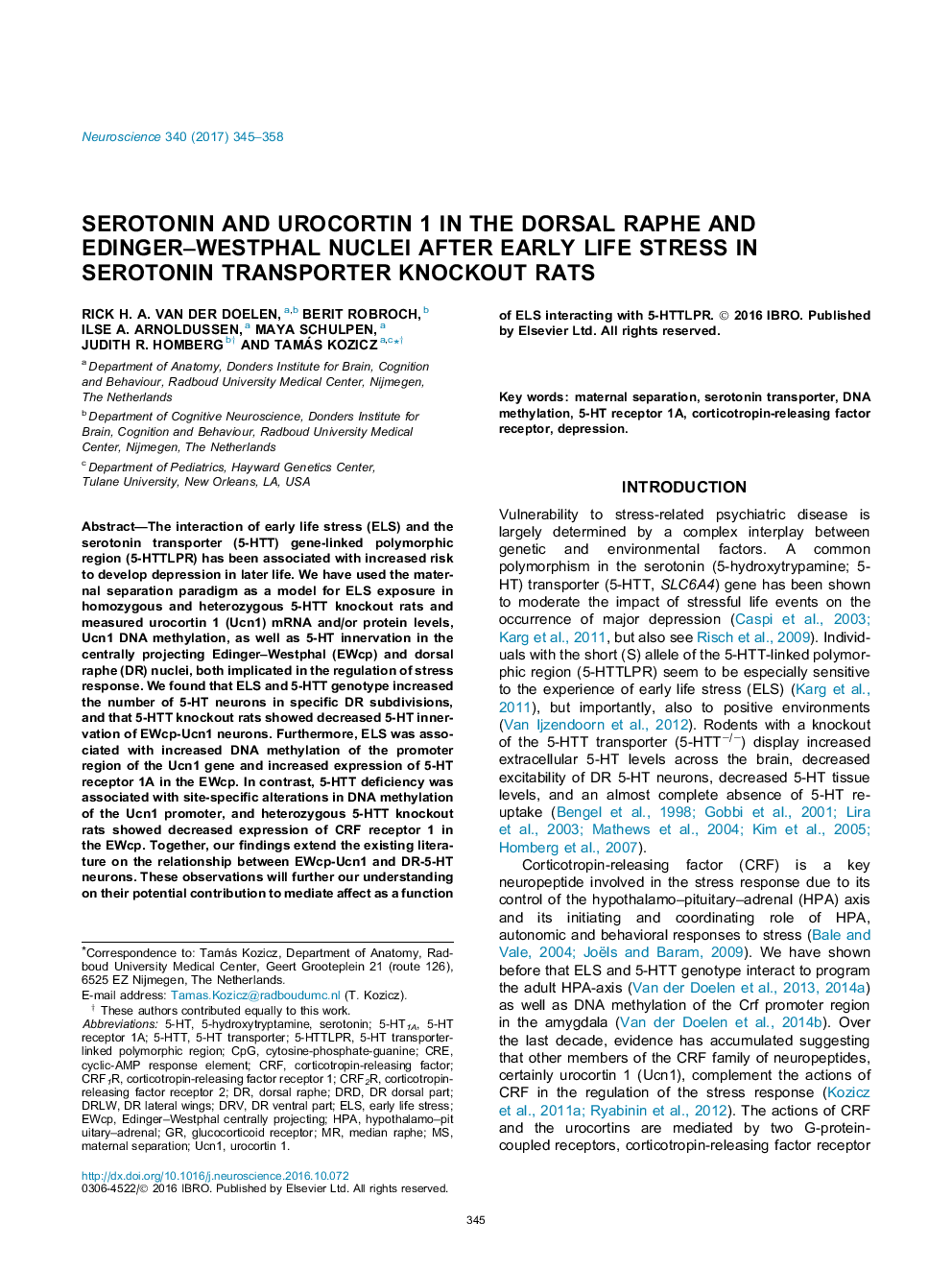| Article ID | Journal | Published Year | Pages | File Type |
|---|---|---|---|---|
| 5737557 | Neuroscience | 2017 | 14 Pages |
â¢Early life stress (ELS) increases 5-HT1A expression in the Edinger-Westphal nuclei (EWcp).â¢ELS and serotonin transporter (5-HTT) genotypes affect DNA methylation of the urocortin 1 gene in the EWcp.â¢5-HTT deficiency is associated with decreased 5-HT innervation of EWcp-urocortin 1 neurons.â¢ELS is associated with an increased number of 5-HT neurons in the lateral wings of the dorsal raphe nucleus.
The interaction of early life stress (ELS) and the serotonin transporter (5-HTT) gene-linked polymorphic region (5-HTTLPR) has been associated with increased risk to develop depression in later life. We have used the maternal separation paradigm as a model for ELS exposure in homozygous and heterozygous 5-HTT knockout rats and measured urocortin 1 (Ucn1) mRNA and/or protein levels, Ucn1 DNA methylation, as well as 5-HT innervation in the centrally projecting Edinger-Westphal (EWcp) and dorsal raphe (DR) nuclei, both implicated in the regulation of stress response. We found that ELS and 5-HTT genotype increased the number of 5-HT neurons in specific DR subdivisions, and that 5-HTT knockout rats showed decreased 5-HT innervation of EWcp-Ucn1 neurons. Furthermore, ELS was associated with increased DNA methylation of the promoter region of the Ucn1 gene and increased expression of 5-HT receptor 1A in the EWcp. In contrast, 5-HTT deficiency was associated with site-specific alterations in DNA methylation of the Ucn1 promoter, and heterozygous 5-HTT knockout rats showed decreased expression of CRF receptor 1 in the EWcp. Together, our findings extend the existing literature on the relationship between EWcp-Ucn1 and DR-5-HT neurons. These observations will further our understanding on their potential contribution to mediate affect as a function of ELS interacting with 5-HTTLPR.
